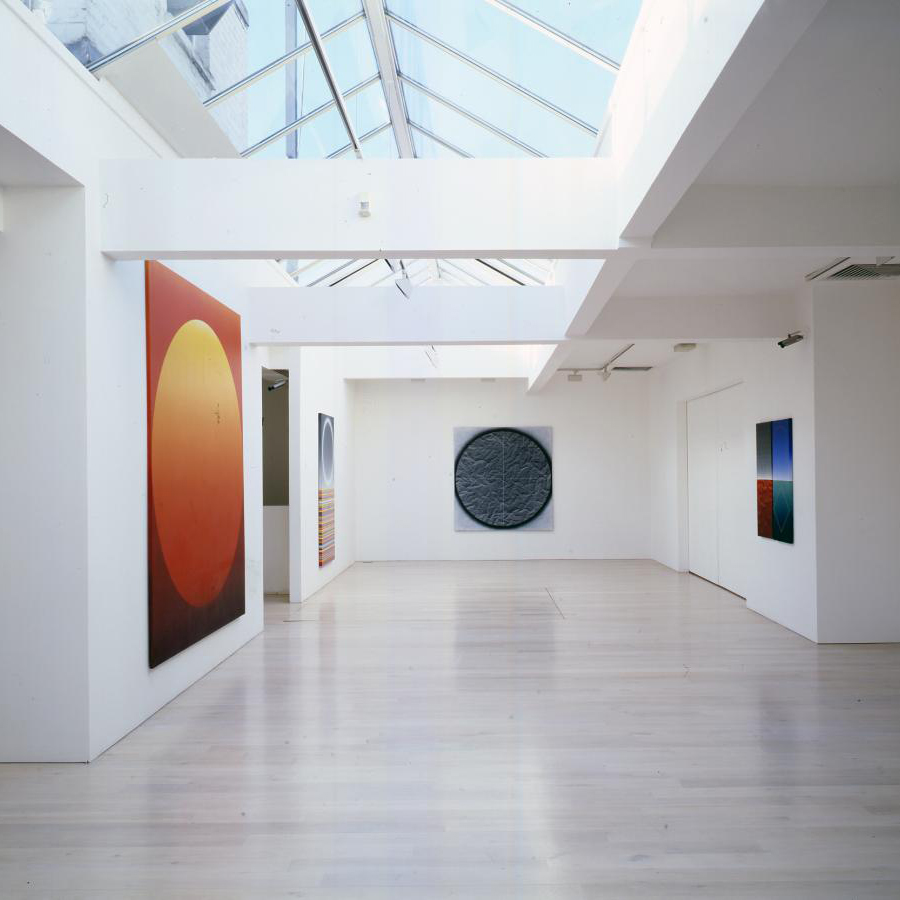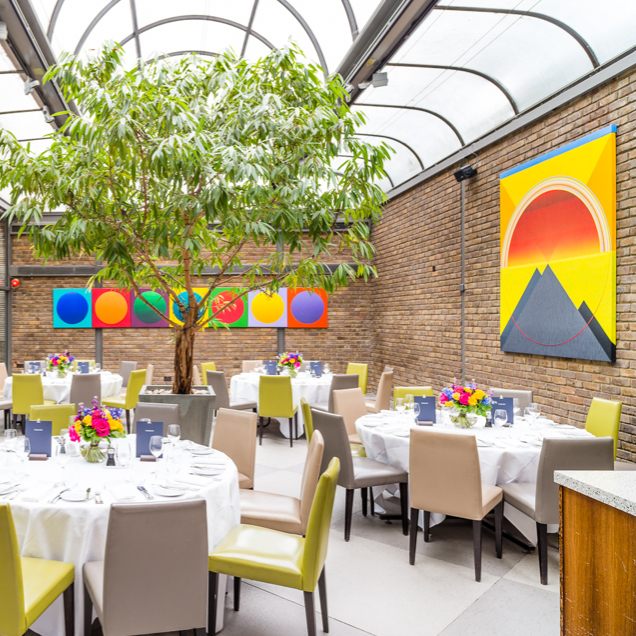Biography
Peter Kalkhof (* 20. December 1933 in Staßfurt / D; † 24. February 2014 in London / UK)'Close your physical eye in order to see your own picture with your spiritual eye first. After that you reveal what you have seen in the dark, so that it may reappear for others, from the outside to the inside.'
(Caspar David Friedrich 1774* - 1840†)
Peter Kalkhof was an important pioneer and co-initiator, as well as a proponent, of the dominant art movements in the 1970s which are variously known as Concrete Art, OP Art, New Geometry, Hard Edge or Post-Painterly Abstraction. His legacy invites us to participate in these fascinating developments and appreciate the singularity of his contribution as an artist.
Peter Kalkhof was born in Stassfurt-Leopoldshall, Germany on 20 December 1933. He began work as an apprenticeship carpenter in Seesen-Herrhausen / Harzgebirge during the post-war era in 1949. Between 1952-1956 he trained and worked as a relief printer but also began the study of fine art painting at the Arts and Craft Academy of Brunswick. In 1956 he continued his education in fine art at the Academy of Fine Art in Stuttgart where he obtained the first prize for portrait painting in 1959.
These early years of sound training and craftsmanship lay the foundations for Peter Kalkhof’s extensive output as an artist and are fundamental to an understanding of his character and artistic temperament. The completed quality of his finished art is deeply impressive. The mostly self-determined construct for Peter’s paintings, his choice of materials as well as the wide range of diverse and highly professional techniques, are just some of the very special and unique features that characterise his immense oeuvre.
Due to the consistent high quality of the artwork it is sometimes difficult to identify with accuracy when exactly an individual work was painted, even decades later.
In 1960-1961 Peter obtained a scholarship at the prestigious Slade School of Fine Art in London and then finished his art studies at the École Nationale Supérieure des Beaux-Arts in Paris. During this period, he increasingly immerses himself in the avant-garde art movements of the time which not only causes him to question his neo-classical and modernist training but also has a deep and lasting effect on his later work.
After moving to London, England in 1963 he lived and worked there as an artist until his death in 2014. In London he married the renowned jewellery designer Jeanne Thé. Together they had a son also called Peter (Kuti).
During the years 1964-1988 Peter held the position of senior lecturer in fine art at the Department of Art at the University of Reading, just outside London.
In the middle of the 1960s Peter Kalkhof developed the principle of Colour & Space, the basis of his artistic life’s work. His work was rooted in the Northern Romantic tradition. One of his favourite paintings was Monk by the Sea (1810) by Caspar David Friedrich. He was also deeply influenced by the transcendental abstractions of artists like Malevich, Kandinsky and Rothko. Peter Kalkhof's artworks are described by his friend and colleague, art historian Roger Cook, as: ‘Numinous evocations of light and colour addressed to a world after the death of God in which profane space recovers its sacred origin; images which renew man's ancient experience of ‘sacred space’.’(1977)
The ‘vertical line of being’ and the ‘horizontal line of the world’ are referenced in diverse and numerous colour compositions. The micro and macro space finds expression in a partly very concise and sometimes very free geometric formal language. His works seem timeless because the dominant topics are the universal aspects of human existence in relation to the world and cosmos.
Peter was a consummate traveller and lover of travel during the whole of his life. These travels appear to have been not only physical but also spiritual. They seem to indicate a search for something that cannot be found outside of the individual self.
Numerous excursions to ancient cultural sites across the whole globe reappear in his art in various guises. His triangles and squares are examples that can be found in the pyramids of the Mayans, Aztecs and ancient Egyptians, the meditative circles in far-east mandalas, the horizontal line as boundary between the sky and vast landscapes, the scatter of geometric elements in the apparently random distribution of stars and galaxies within the firmament. An evidently unstable and chaotic world is contrasted with universal principles of consistency and order. These areas of conflict are forcefully communicated through Peter Kalkhof's art.
Over the decades Peter’s art has been shown in various international solo and group exhibitions and can be found in many public and private collections.
Throughout the 1960s a very personal and unique friendship developed with the gallery owner Annely Juda in London. This internationally renowned gallery Annely Juda Fine Art London continues to represent Peter’s work as an artist through Annely’ s son, David Juda. This unique co-operation has led to many exhibitions not only within the London gallery itself but also to international art exhibitions such as Art Basel.
Sadly, Peter passed away in London on 24 February 2014.
Currently his artistic legacy is being managed by the Peter Kalkhof Foundation.
-Jens Kalkhof, 2021
